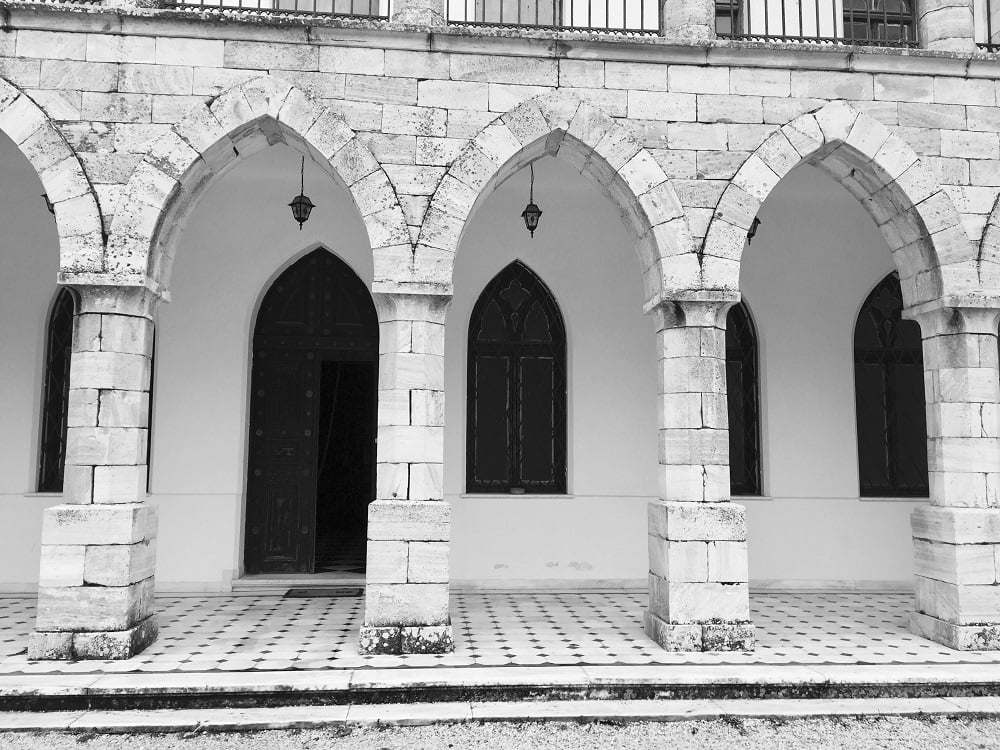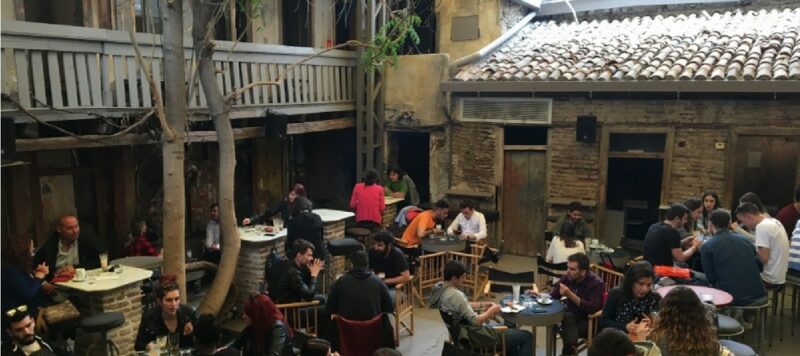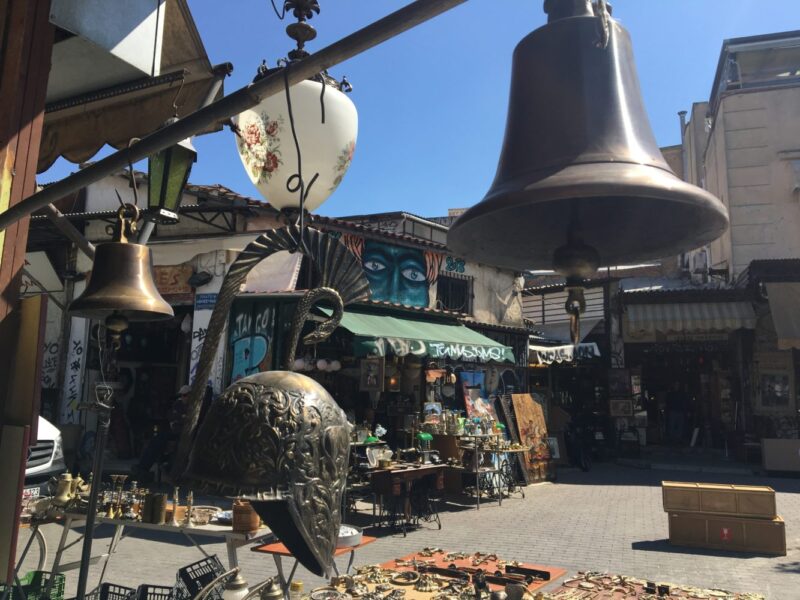The Palace of the Duchess of Piacenza (also known as Castle of the Duchess of Placentia, Pyrgos Doukissis Plakentias, Duchess of Plakentia Mansion or Rododafni Castle) is an interesting place because of its architecture and the personality of its first owner, a rich and colorful duchess. The place alone does not justify the trip but is worth a detour during a day in Pendeli. Ideal for example after the visit of the Monastery and/or the Pendeli Cave.
The Duchess of Plaisance: an adventurous and controversial woman
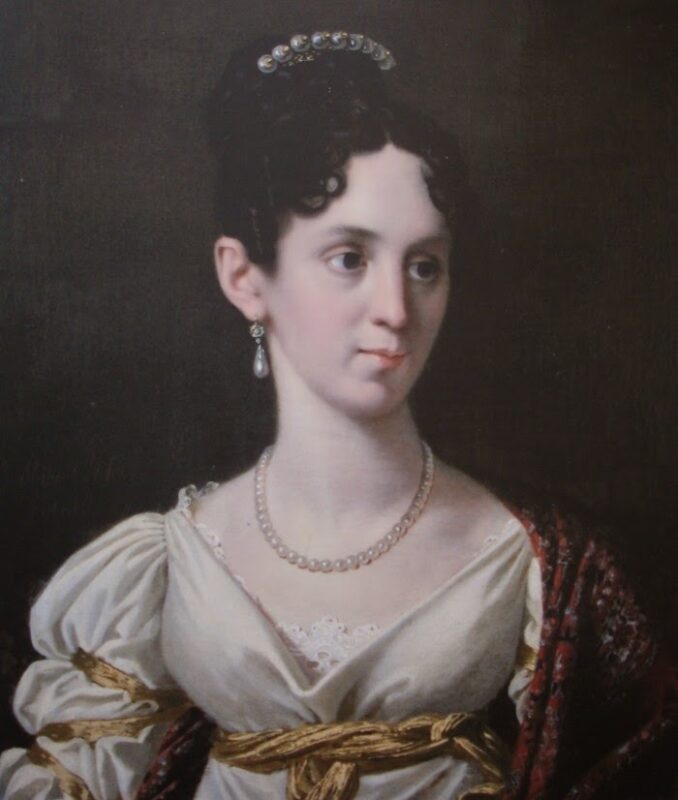
But who was the mysterious Duchess of Piacenza?
Sophie de Marbois was born in the United States in 1785 and lived in France and Italy. A feminist before her time, she refused to follow her husband who was appointed governor of Holland by Napoleon. Then, she chose to leave France after the fall of the First Empire to settle in Greece with her daughter Elisa to support the revolution.
A free woman with an assertive personality, disregarding the conventions of her time, the duchess converted to Judaism and sponsored the construction of a synagogue in Halkida, on the island of Evia.
His life was eventful. She was captured in 1846 by the klephs, the bandits of the Greek mountains. Quickly released, the question arose of the links between the Duchess of Plaisance and the Klephtes. The legend around the character also says that she had an affair with the brigand Davelis (enjoy your passage to Pendeli to visit the cave of this famous brigand).
In 1837, Elisa, the daughter of the duchess, died after contracting the plague during a trip to the Ottoman Empire. His mother had his body embalmed and placed in her palace in Athens (now the Byzantine and Christian Museum). The duchess ended the rest of her life in mourning and in complete isolation.
This enigmatic duchess, known for her love of Greece, is considered one of the benefactors of Athens. The metro station Doukissis Plakentias (which means “Duchess of Placentia” in Greek) was named in her honor.
Palace of the Duchess of Piacenza
The castle was built at the request of the Duchess by one of the greatest architects of the time, Stamatios Kleanthis. Construction began in 1840 and unfortunately the Duchess never saw the building completed.
In 1959, this palace was designated by the state as the residence of the Crown Prince. The building was completely renovated and modernized in 1960-1961 and Constantine II lived there from 1961 to 1964, before becoming the last King of the Hellenes.
Today, the building belongs to the Greek state and is used in summer for cultural events.
The Palace of the Duchess of Piacenza (or Duchess of Plaisance) was built mainly in marble. The building itself is well preserved. It looks like a castle and has an interesting neo-gothic style. Unfortunately, the exteriors are not very well maintained and the place seems somewhat forgotten. What a shame!
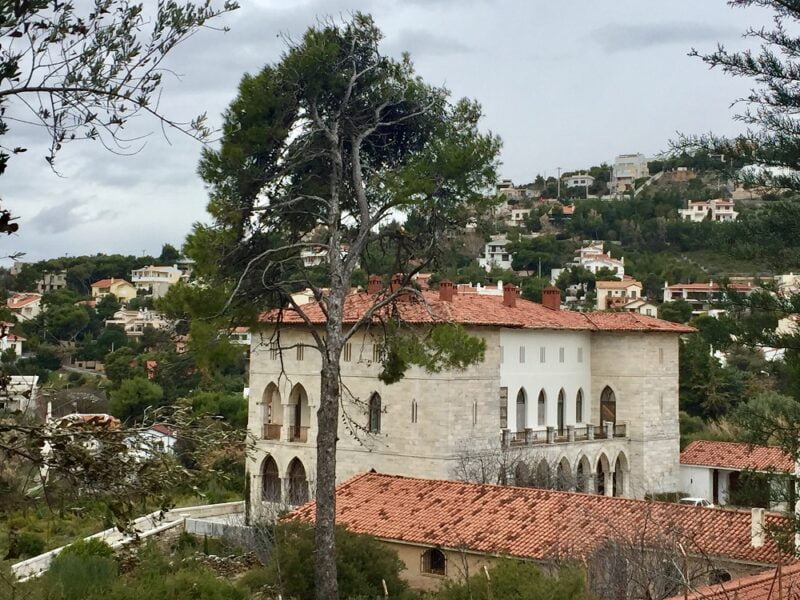
To reach Duchess of Plakentia Mansion
The castle is located on Mount Pendeli, not far from the monastery. There is no public transportation nearby. So you have to take a car to get there. There are no signs indicating the building. Here is the address to enter in your GPS for easy access: “Lordou Vironos 3, 15236 Penteli”. Depending on the GPS, Pendeli is sometimes written “Penteli” and you will find the street under the name “Vironos” or “Vyronos”.
It is possible to tour the exterior of the Palace at any time of day. The interior of the building is closed to the public. Here on Google Maps.
Laure M.
Updated April 19, 2024
